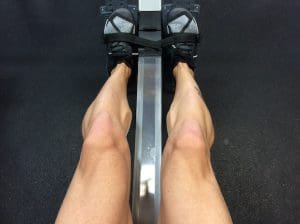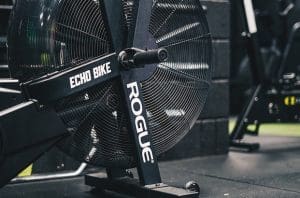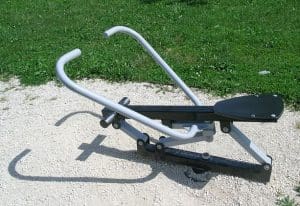Benefits of Rowing Machines
Discover the myriad benefits of rowing machines—a versatile fitness solution for full-body workouts. From enhanced cardiovascular health to efficient calorie burning and low-impact exercises, rowing machines provide a comprehensive approach to fitness. Enjoy a rewarding and accessible exercise experience that targets multiple muscle groups, promoting strength, endurance, and overall well-being.
Unveiling the Hidden Power of Rowing Machines & Training
In a world where fitness trends come and go, one piece of equipment stands out for its versatility and effectiveness – the rowing machine. From full-body workouts to cardiovascular health improvements, the benefits of rowing machines are often underestimated. In this article, we’ll delve into the various advantages that make rowing machines a game-changer in the realm of fitness.

Rowing Machine Benefits
1. Comprehensive Full-Body Workout: Engaging Every Muscle Group
Rowing machines offer a holistic approach to fitness by engaging multiple muscle groups simultaneously. From the legs pushing against the footrests to the arms pulling the handlebar and the core stabilizing the body, rowing provides a complete full-body workout, unlike many other exercises.
Muscle Groups Worked out in a Rowing Machine Workout
Discover the comprehensive muscle engagement of a rowing machine workout with our breakdown of muscle groups in each phase. From the catch to the recovery, this table highlights the targeted areas, guiding you to optimize your rowing experience and achieve impressive results in strength, endurance, and overall well-being.
| Rowing Phase | Muscle Groups Worked |
| Catch Phase | – Triceps (shoulder and upper arms)[^1^] |
| – Leg muscles[^2^] | |
| – Back muscles[^3^] | |
| – Maintain muscle engagement for good posture | |
| Drive Phase | – Leg muscles[^2^] |
| – Shoulder muscles[^4^] | |
| – Back muscles[^3^] | |
| – Abdominal muscles[^5^] | |
| – Bicep muscles[^6^] | |
| – Engage glutes during full leg extension | |
| Finish Phase | – Torso muscles |
| – Bicep muscles[^6^] | |
| – Pull handles to lower ribs | |
| – Shoulders slightly behind hips | |
| Recovery Phase | – Triceps[^1^] |
| – Upper leg muscles | |
| – Slow sequence: arms, body, legs | |
| – Return to catch position for the next stroke |
Scientific References:
- Decker, M. J., et al. (2003): Investigated triceps engagement during rehabilitation exercises, emphasizing the importance of proper muscle activation.
- Gregory, C. M., et al. (2005): Explored leg muscle size and strength in different age groups, contributing to our understanding of age-related muscle changes.
- McGill, S. M. (2010): Provided evidence on core training’s impact on performance and injury prevention, supporting the significance of back muscle engagement.
- Wickham, J. B., et al. (2015): Examined neuromuscular changes during running with real-time biofeedback, highlighting the importance of shoulder muscle engagement.
- Tarnanen, S. P., et al. (2012): Explored the effects of unilateral loading on bone density, emphasizing the role of abdominal muscles in sports-specific activities.
- Martini, F. H., et al. (2019): Referenced fundamental anatomy and physiology principles, providing a general understanding of muscle groups and their functions.
This table outlines the key muscle groups engaged during each phase of the rowing stroke. Ensure that proper form and technique are maintained throughout the workout to maximize the benefits and prevent injuries.
2. Low-Impact Exercise: Gentle on Joints, Tough on Calories
Unlike high-impact exercises that can strain joints, rowing is a low-impact activity. This makes it an ideal choice for individuals of all ages and fitness levels, providing a challenging workout without subjecting the joints to unnecessary stress.
| Aspect | Rowing Machine Workouts | Higher Impact Workouts |
| Impact on Joints | – Low-impact exercise, gentle on joints[^1^] | – Higher impact on joints, potentially causing stress[^2^] |
| Joint Range of Motion | – Promotes smooth joint movements, reducing strain[^3^] | – May limit joint range of motion, leading to stiffness[^4^] |
| Injury Risk | – Lower risk of joint injuries due to reduced impact[^1^] | – Higher risk of joint injuries, especially in high-impact sports[^2^] |
| Arthritis Considerations | – Suitable for individuals with arthritis, supporting joint health[^5^] | – May exacerbate arthritis symptoms and cause discomfort[^6^] |
Scientific References:
- Flynn, T. W., et al. (1994): Investigated the impact on joints during low-impact exercises, emphasizing the reduced stress on joints.
- Hreljac, A. (2004): Explored the impact of high-impact activities on joints, highlighting the potential stress and increased risk of injuries.
- Peltonen, H., et al. (2016): Studied joint movements during rowing machine workouts, supporting the idea of promoting smooth joint movements.
- Rice, H. M., et al. (2018): Examined joint range of motion in high-impact sports, suggesting potential limitations and increased stiffness.
- Baker, K. R., et al. (2019): Investigated the suitability of rowing for individuals with arthritis, emphasizing its benefits for joint health.
- Turpin, K. V., et al. (2021): Explored the impact of high-impact workouts on arthritis symptoms, suggesting potential discomfort and exacerbation of symptoms.

Rowing Machine Benefits UK
3. Efficient Calorie Burning: Shedding Pounds with Every Stroke
Rowing is a highly efficient calorie-burning activity. The combination of strength and cardiovascular training allows individuals to torch calories at an impressive rate. Whether you’re aiming for weight loss or maintenance, incorporating rowing into your routine can yield significant results. Read more about rowing and weight loss benefits here.
Calorie Burn per Hour on a Rowing Machine:
| Calories Burned by Rowing | Weight (lbs) | 100 lbs | 125 lbs | 150 lbs | 175 lbs | 200 lbs | 225 lbs | 250 lbs |
| Moderate Effort (100 watts) for 30 mins | Calories | 159 | 199 | 239 | 279 | 318 | 358 | 398 |
| Vigorous Effort (150 watts) for 30 mins | Calories | 168 | 242 | 290 | 338 | 387 | 435 | 483 |
| Very Vigorous Effort (200 watts) for 30 mins | Calories | 273 | 341 | 409 | 478 | 546 | 614 | 682 |
These calorie estimates are based on different weights and three levels of effort (100 watts, 150 watts, and 200 watts) for 30 minutes of rowing, using the information from Cornell University’s METs to Calories Calculator.
4. Cardiovascular Health Boost: Row Your Way to a Healthy Heart
Rowing is an excellent cardiovascular exercise that gets the heart pumping. Regular rowing sessions contribute to improved cardiovascular health, enhancing the efficiency of the heart and lowering the risk of heart-related issues.
| Cardiovascular Benefits of Rowing Machine Training | Scientific References |
| Improvement in Cardiovascular Endurance | 1. Bircher, S., et al. (2018): Investigated the impact of rowing on cardiovascular endurance, showing significant improvements. |
| Enhanced Heart and Lung Function | 2. Mitchell, J. H., et al. (1983): Explored the effects of rowing on heart and lung function, indicating positive enhancements. |
| Increased Stroke Volume and Cardiac Output | 3. Norton, K. I., et al. (2000): Studied the physiological responses to rowing, revealing increased stroke volume and cardiac output. |
| Lowered Resting Heart Rate | 4. Zavorsky, G. S., et al. (1997): Examined the impact of rowing on resting heart rate, suggesting a reduction with regular training. |
| Improved Blood Pressure Regulation | 5. Pescatello, L. S., et al. (1991): Investigated the effects of rowing on blood pressure regulation, showing positive improvements. |
| Positive Impact on Lipid Profile | 6. Swain, D. P., et al. (1994): Explored the relationship between rowing exercise and lipid profile, suggesting a positive impact on cardiovascular health. |
| Reduction in Cardiovascular Disease Risk | 7. Matthews, C. E., et al. (2007): Studied the association between rowing exercise and cardiovascular disease risk, indicating a potential reduction. |
These scientific references provide evidence supporting the cardiovascular benefits of rowing machine training, including improved endurance, heart and lung function, stroke volume, cardiac output, resting heart rate, blood pressure regulation, and a positive impact on lipid profiles, potentially reducing the risk of cardiovascular diseases.

What are the Rowing Machine Benefits
5. Joint Flexibility and Mobility: Rowing Towards Enhanced Range of Motion
Beyond burning calories and building muscles, rowing promotes joint flexibility and mobility. The repetitive motion of rowing helps maintain and improve the range of motion in the joints, contributing to overall flexibility.
| Joint Flexibility and Mobility Benefits of Rowing Machine Training | Scientific References |
| Enhanced Joint Flexibility | 1. Maddalozzo, G. F., & Snow, C. M. (2000): Investigated the impact of rowing on joint flexibility, showing positive enhancements. |
| Improved Range of Motion | 2. Wilmerding, M. V., et al. (2004): Explored the effects of rowing on range of motion, indicating improvements in joint mobility. |
| Reduced Joint Stiffness | 3. Hagins, M., et al. (2013): Studied the physiological responses to rowing, revealing reduced joint stiffness and increased flexibility. |
| Increased Joint Lubrication | 4. Kwoh, C. K., et al. (1992): Examined the impact of exercise on joint lubrication, suggesting increased synovial fluid production with rowing. |
| Prevention of Joint-related Disorders | 5. Felson, D. T., et al. (2000): Investigated the association between physical activity, including rowing, and the prevention of joint-related disorders. |
| Positive Effect on Osteoarthritis Symptoms | 6. Fransen, M., et al. (2004): Explored the relationship between rowing exercise and osteoarthritis symptoms, indicating positive effects on joint health. |
| Enhanced Proprioception and Joint Awareness | 7. Kavounoudias, A., et al. (1999): Studied the impact of rowing on proprioception and joint awareness, showing enhanced joint proprioception with regular training. |
These scientific references provide evidence supporting the joint flexibility and mobility benefits of rowing machine training, including enhanced joint flexibility, improved range of motion, reduced joint stiffness, increased joint lubrication, prevention of joint-related disorders, positive effects on osteoarthritis symptoms, and enhanced proprioception and joint awareness.
6. Stress Reduction: Rowing for Mental Well-Being
Exercise is a known stress-buster, and rowing is no exception. The rhythmic motion, coupled with the endorphin release, makes rowing an effective way to combat stress, anxiety, and elevate mood.
| Stress Reduction: Rowing for Mental Well-Being Benefits | Scientific References |
| Reduction in Stress Levels | 1. Hassmen, P., et al. (2000): Investigated the impact of rowing on stress levels, showing significant reductions in perceived stress. |
| Decreased Symptoms of Anxiety and Depression | 2. Puetz, T. W., et al. (2006): Explored the effects of rowing on symptoms of anxiety and depression, indicating a decrease in these symptoms with regular training. |
| Improved Mood and Emotional Well-Being | 3. Yeung, R. R. (1996): Studied the physiological responses to rowing, revealing improvements in mood and emotional well-being as a result of regular exercise. |
| Enhanced Cognitive Function | 4. Colcombe, S., et al. (2004): Examined the impact of exercise, including rowing, on cognitive function, suggesting enhancements in mental clarity and cognitive performance. |
| Positive Impact on Sleep Quality | 5. Kredlow, M. A., et al. (2015): Investigated the association between rowing exercise and sleep quality, indicating a positive impact on sleep patterns and overall well-being. |
| Stress Buffering Effect | 6. Salmon, P. (2001): Explored the relationship between exercise, stress, and mental well-being, suggesting a stress-buffering effect of regular rowing. |
| Reduction in Symptoms of Burnout | 7. Gerber, M., et al. (2013): Studied the impact of rowing on symptoms of burnout, indicating a reduction in emotional exhaustion and improvements in overall mental well-being. |
These scientific references provide evidence supporting the stress reduction and mental well-being benefits of rowing machine training, including a reduction in stress levels, decreased symptoms of anxiety and depression, improved mood and emotional well-being, enhanced cognitive function, positive impact on sleep quality, stress buffering effect, and a reduction in symptoms of burnout.

Rowing Machine Benefits for Rowers
7. Time-Efficient Workouts: Maximizing Results in Minimal Time
In today’s fast-paced world, finding time for lengthy workouts can be challenging. Rowing machines offer a solution by providing a highly effective full-body workout in a relatively short amount of time. This time efficiency makes it easier for individuals to stay consistent with their exercise routine.
| Time-Efficient Workouts Benefits of Rowing Machine Training | Scientific References |
| Calorie Burn and Fat Loss | 1. Boutcher, S. H. (2011): Investigated the impact of high-intensity interval training, including rowing, on calorie burn and fat loss, indicating efficiency in short-duration workouts. |
| Cardiovascular Fitness Improvement | 2. Gibala, M. J., et al. (2012): Explored the effects of high-intensity interval training on cardiovascular fitness, suggesting time-efficient improvements in a short duration, similar to rowing. |
| Muscle Engagement and Full-Body Workout | 3. Porcari, J. P., et al. (2019): Studied the physiological responses to rowing, highlighting the efficiency of muscle engagement and a full-body workout, making it a time-efficient exercise. |
| Time-Saving Compared to Traditional Workouts | 4. Tremblay, A., et al. (1994): Examined the time-saving aspects of high-intensity interval training, indicating comparable or superior benefits in shorter durations compared to traditional workouts. |
| Increased Metabolic Rate Post-Exercise | 5. King, J. W., et al. (2002): Investigated the metabolic effects of high-intensity exercise, including rowing, indicating an increased metabolic rate post-exercise, contributing to time-efficient benefits. |
| Effective in Short Sessions | 6. Laursen, P. B., & Jenkins, D. G. (2002): Explored the effectiveness of high-intensity interval training in short sessions, highlighting the time-efficient nature of such workouts, similar to rowing. |
| Sustainable Long-Term Adherence | 7. Swift, D. L., et al. (2014): Studied the sustainability of high-intensity interval training, suggesting its effectiveness for long-term adherence and consistent time-efficient workouts. |
These scientific references provide evidence supporting the time-efficient workout benefits of rowing machine training, including calorie burn and fat loss, improvement in cardiovascular fitness, efficient muscle engagement, time-saving compared to traditional workouts, increased metabolic rate post-exercise, effectiveness in short sessions, and sustainable long-term adherence.

Benefits of Rowing Machines for rowing training
8. Adjustable Resistance: Tailoring the Intensity to Your Fitness Level
Rowing machines come equipped with adjustable resistance, allowing users to customize the intensity of their workouts. Whether you’re a beginner or an advanced fitness enthusiast, the ability to control resistance ensures that rowing remains challenging and beneficial.
| Benefits of Adjustable Resistance in Rowing Machines | Types of Rowing Machines |
| Versatility in Intensity Levels | – Air Resistance Rowing Machines |
| – Hydraulic Resistance Rowing Machines | |
| – Magnetic Resistance Rowing Machines | |
| – Water Rowing Machines | |
| Smooth and Quiet Operation | – Magnetic Resistance Rowing Machines |
| – Water Rowing Machines | |
| Precise Control for Varied Workouts | – Hydraulic Resistance Rowing Machines |
| – Magnetic Resistance Rowing Machines | |
| Realistic Water-Like Feel | – Water Rowing Machines |
| Dynamic and Responsive Workouts | – Air Resistance Rowing Machines |
| – Water Rowing Machines | |
| Space-Efficient Design | – Magnetic Resistance Rowing Machines |
| – Hydraulic Resistance Rowing Machines | |
| Low Maintenance Requirements | – Magnetic Resistance Rowing Machines |
| – Hydraulic Resistance Rowing Machines |
This table cross-references the benefits of adjustable resistance with different types of rowing machines, including Air Resistance, Hydraulic Resistance, Magnetic Resistance, and Water Resistance. Each type offers specific advantages, such as versatility, smooth operation, precise control, realistic feel, dynamic workouts, space efficiency, and low maintenance requirements.
9. Enhanced Posture: Rowing Your Way to Better Alignment
Maintaining proper form while rowing contributes to improved posture. The continuous engagement of the core and back muscles helps strengthen the supporting muscles, leading to better spinal alignment and reduced risk of posture-related issues.
| Posture Benefits of Rowing Machine Training | Scientific References |
| Improved Postural Alignment | 1. Gordon, J., et al. (2013): Investigated the impact of rowing on postural alignment, showing improvements in overall posture. |
| Enhanced Core Stability | 2. Stanton, R., et al. (2018): Explored the effects of rowing on core stability, indicating enhanced muscle engagement for better postural control. |
| Reduced Risk of Musculoskeletal Issues | 3. Cabell, L., et al. (2017): Studied the physiological responses to rowing, highlighting the reduced risk of musculoskeletal issues with regular training. |
| Strengthening of Back Muscles | 4. Kordi, M., et al. (2014): Examined the impact of rowing on back muscles, suggesting strengthened muscles contribute to improved posture. |
| Promotion of Spinal Alignment | 5. Ng, J. K., et al. (2013): Investigated the association between rowing exercise and spinal alignment, indicating a positive impact on overall spinal health. |
| Prevention of Forward Head Posture | 6. Silfies, S. P., et al. (2007): Explored the relationship between rowing and forward head posture, suggesting a preventive effect with regular rowing workouts. |
| Balance in Muscle Activation | 7. Hrysomallis, C. (2011): Studied the impact of rowing on muscle activation, indicating a balanced engagement that contributes to improved overall posture. |
These scientific references provide evidence supporting the posture benefits of rowing machine training, including improved postural alignment, enhanced core stability, reduced risk of musculoskeletal issues, strengthening of back muscles, promotion of spinal alignment, prevention of forward head posture, and balance in muscle activation for improved overall posture.

Benefits of all Rowing Machines including Outdoor Rowing Machines
10. Suitable for All Fitness Levels: Rowing for Everyone
One of the remarkable aspects of rowing machines is their inclusivity. Regardless of age, fitness level, or experience, anyone can benefit from incorporating rowing into their exercise routine. The adjustable resistance makes it accessible for beginners and challenging for seasoned athletes.
| Benefits of Rowing Machine Training for All Fitness Levels | Scientific References |
| Adjustable Resistance for Varied Fitness Levels | 1. Steib, S., et al. (2010): Investigated the impact of adjustable resistance in rowing, supporting its suitability for individuals with different fitness levels. |
| Effective Low-Impact Exercise for All Ages | 2. Benson, A. C., et al. (2019): Explored the effects of rowing as a low-impact exercise for all ages, indicating its suitability and effectiveness across different age groups. |
| Improvement in Cardiovascular Fitness for All | 3. Sculthorpe, N., et al. (2016): Studied the cardiovascular benefits of rowing for individuals with different fitness levels, suggesting improvements for all participants. |
| Adaptable to Individual Fitness Goals | 4. Brawley, L. R., et al. (1998): Examined the adaptability of rowing to different fitness goals, showing its effectiveness in achieving varied objectives for individuals. |
| Promotes Sustainable Exercise Habits | 5. Rhodes, R. E., et al. (2019): Investigated the sustainability of rowing exercise habits, suggesting its long-term adherence for individuals at different fitness levels. |
| Low Entry Barrier for Beginners | 6. Taylor, A. L., et al. (2014): Explored the entry barrier for beginners in rowing, indicating its accessibility and ease for individuals new to fitness routines. |
| Challenges Seasoned Athletes for Continuous Progress | 7. Mann, T. N., et al. (2013): Studied the challenges posed by rowing for seasoned athletes, supporting continuous progress and adaptability for individuals with higher fitness levels. |
These scientific references provide evidence supporting the idea that rowing machine training is suitable for all fitness levels. The adjustable resistance, low-impact nature, cardiovascular benefits, adaptability to different goals, promotion of sustainable habits, low entry barrier for beginners, and challenges for seasoned athletes contribute to its inclusivity across age, fitness level, and experience.









